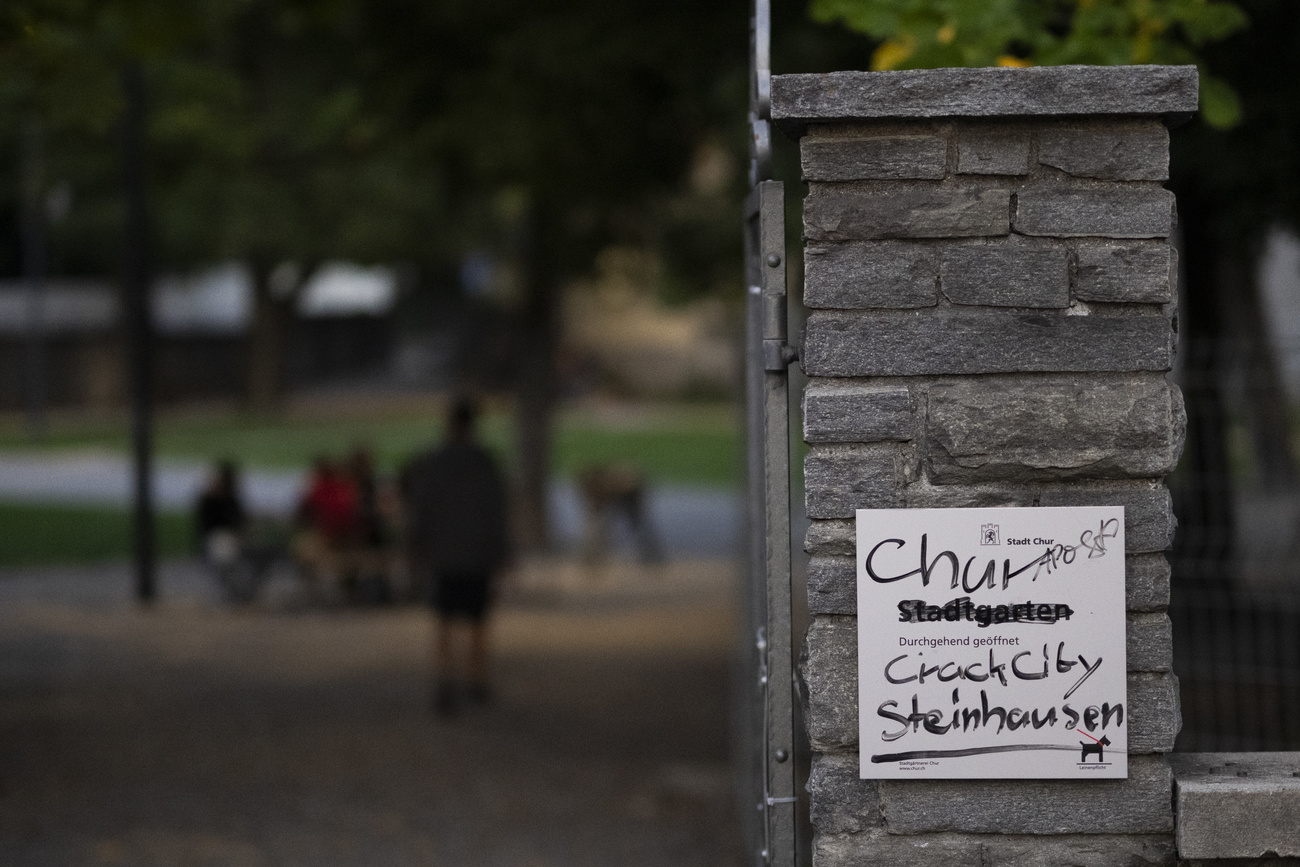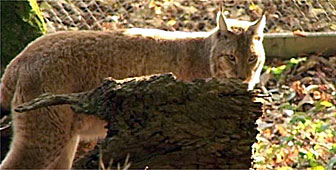Looking for the missing lynx

Experts have raised the alarm over the decline in the number of lynx reintroduced into northeastern Switzerland.
The Federal Environment Agency has called on the cantons concerned to take action. Meanwhile the lynx debate rages between environmentalists and hunters.
Cuts to LUNO, an organisation sponsored by the environment agency which oversaw the reintroduction of the large cats into the region, mean that monitoring of the lynx population is also under threat.
When the LUNO project started in 2001, it was widely seen as the last chance for the survival of the lynx in Switzerland.
But recent data has raised concerns about lynx numbers. Of the nine lynx reintroduced into the cantons of Appenzell Inner Rhodes, Appenzell Outer Rhodes, St Gallen, Thurgau and Zurich between 2001 and 2003, only four are known to be alive.
“The project to reintroduce the lynx is now on shaky ground,” said the agency’s Christoph Jäggi, The biologist heads the agency’s Swiss Lynx Concept project that encompasses LUNO and KORA, a research project into the conservation and management of carnivores.
Poachers
Speculation has been mounting as to why the lynx population seems to have declined in the region.
Geneticists claim that inbreeding could be to blame, but Pro Natura, Switzerland’s largest nature conservation organisation, offers a different explanation: unlawful shooting.
The St Gallen section of Pro Natura says there is sufficient prey (roe deer, chamois) in the region for the lynx’s needs. Moreover, the females have given birth and raised their young fairly quickly, which proves the habitat is suitable.
“We blame hunting. All the indications are that human activity is involved,” said Christian Meienberger, head of the St Gallen section of Pro Natura in an interview with swissinfo.
“One third of the dead lynx found in Switzerland and analysed by KORA showed signs of gunshot wounds,” he added.
“Defamation”
The hunters reject these accusations, openly speaking of “defamation”. In their view, there are many possible reasons for the animals’ disappearance.
“The head count is only a rough estimate – the results depend on the method used,” said Hanspeter Egli, president of the St Gallen hunting club.
“Or it could be that the missing animals have moved to another region,” he added, pointing out that legitimate hunters are the first to condemn poaching.
More disturbing to Hanspeter Egli, however, is the perpetual conflict between hunters and environmentalists, together with the financial aspect of re-introducing endangered species.
“People should think first before launching these projects, given that taxpayers’ money is at stake,” he said.
Cantonal contributions
After the budget cuts voted by parliament in December 2005, the environment agency will no longer have the staff to conduct an intensive lynx monitoring programme in eastern Switzerland when the LUNO project finishes at the end of 2006.
“It will only be possible to continue the project if the cantons in question are involved. We are holding discussions with them,” said Jäggi.
However, this appears to be a vain hope: it is unlikely that in a climate of cost-cutting the cantons will agree to dip into public funds to monitor the survival of the lynx.
So, having been introduced to a new territory, will the lynx now be abandoned to its fate?
“Not necessarily,” said Jäggi. “We’ll be able to monitor the population using less specific but nonetheless useful methods as part of the basic national survey.”
The task of diagnosing the state of health of Switzerland’s lynx will therefore probably be entrusted to amateur observers venturing into the forest. Or to sportsmen and environmentalists who, for once, will be united in a common purpose.
swissinfo, Luigi Jorio
Lynx in Switzerland currently number 100-130.
They occupy two distinct territories, separated by the central Alps: one in the northwestern Alps, covering an area of approximately 10,000 km2, the other in the Jura, covering roughly 5,000 km2.
Between 2001 and 2003, nine lynx were introduced to eastern Switzerland.
Only four are known to be alive.
The lynx disappeared from the central Alps in the 17th century. Only in the Jura and the Alps did the species survive until the beginning of the 20th century.
The Federal Law on Hunting has afforded the lynx protection since 1962. Since the 1970s, animals from the Carpathian Mountains of Slovakia have been re-introduced into the western Alps and the Jura.
The Federal Environment Agency’s “Swiss Lynx Concept” aims to reintroduce the lynx region by region and join up all the isolated populations living along the Alpine chain.
There are similar projects to reintroduce the beaver and the grey partridge.

In compliance with the JTI standards
More: SWI swissinfo.ch certified by the Journalism Trust Initiative










You can find an overview of ongoing debates with our journalists here . Please join us!
If you want to start a conversation about a topic raised in this article or want to report factual errors, email us at english@swissinfo.ch.